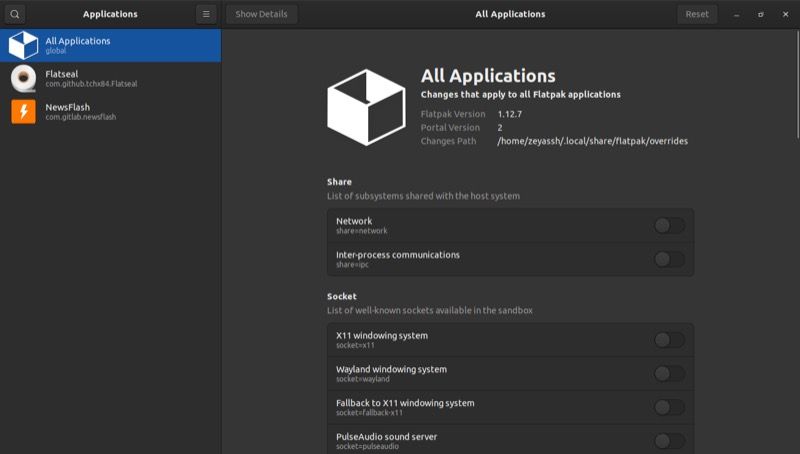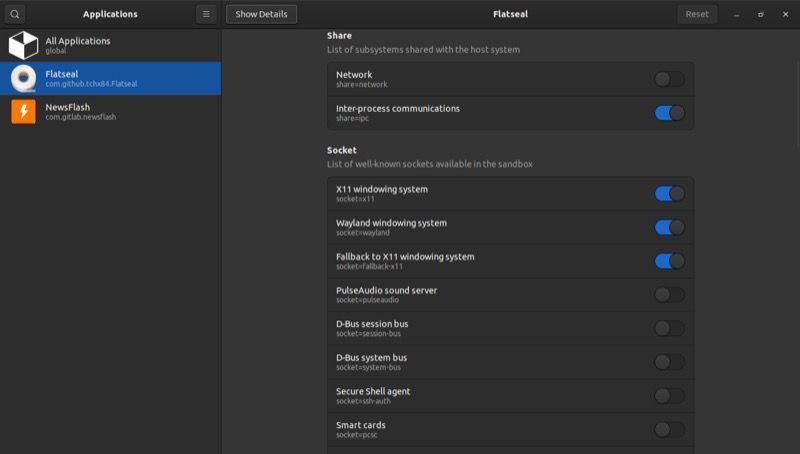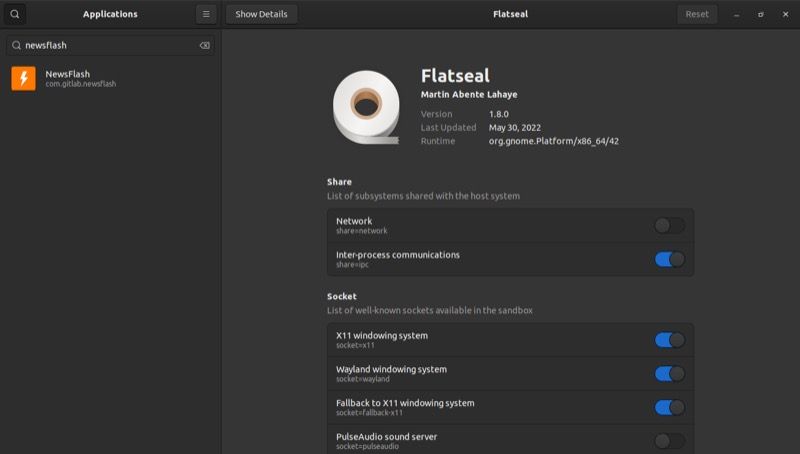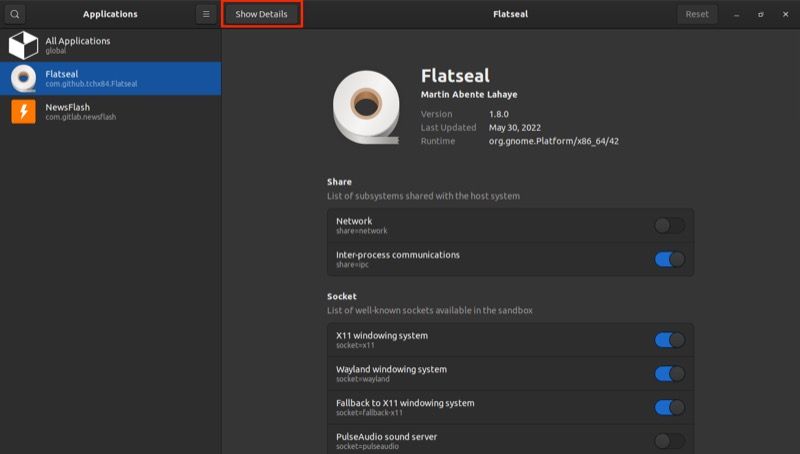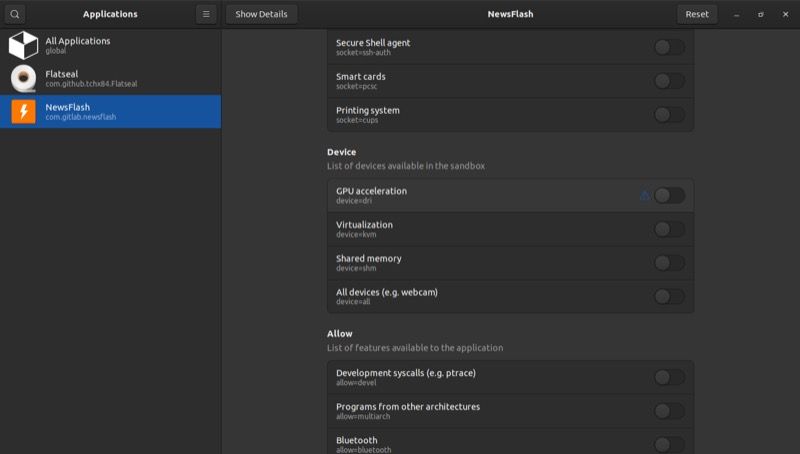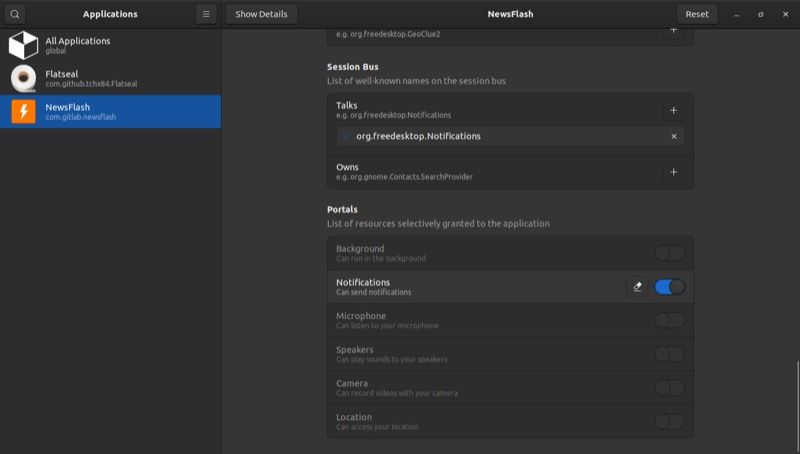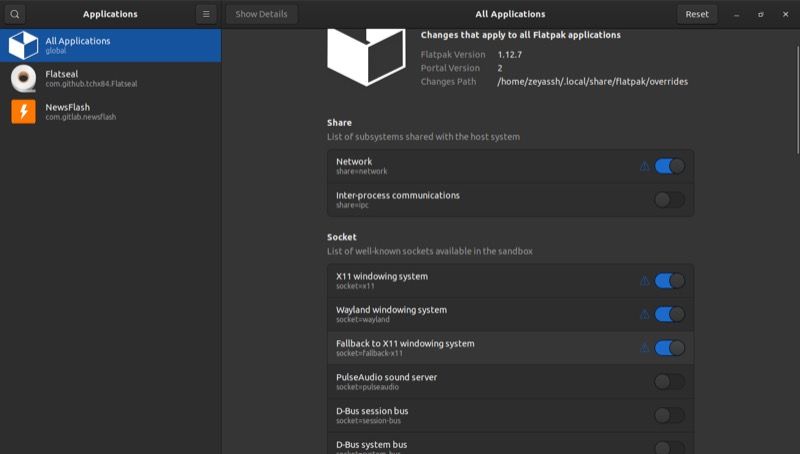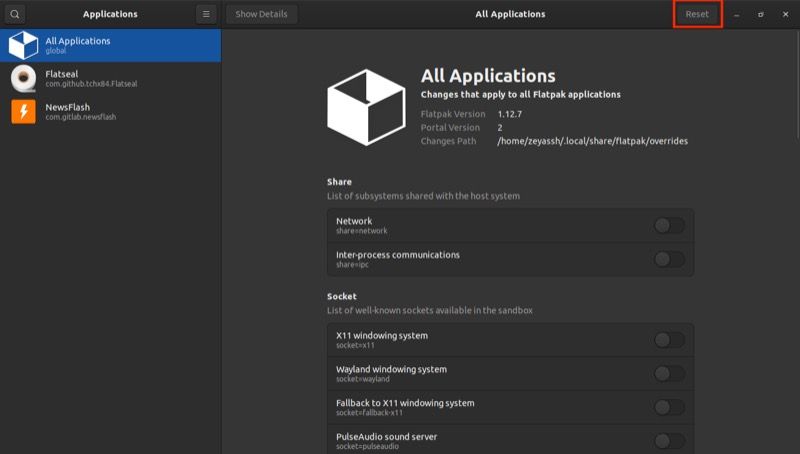Flatpak is a universal packaging system that makes it easy to install software on Linux. It’s stable, backward compatible, and bundles dependencies with the program itself, so you don’t have to install them separately.
Another advantage of Flatpak is that all Flatpak programs run in a sandbox for better system security. However, this also means that each Flatpak program must request access to different system components.
If you use Flatpak, you’ll know that managing these permissions can be tricky. Flatseal is a graphical utility that simplifies this and lets you easily view and edit Flatpak permissions on Linux.
Let’s dive in to see how.
What is a flat seal?
Flatseal is a GUI-based application with a neat GUI that lets you view and manage permissions for all Flatpak packages installed on your machine. It’s easy to use, and since messing up permissions can have negative consequences, it has a reset button to help you reset all permissions to their default state if something goes wrong.
Everything from the most basic network permissions to permissions for windowing systems, GPU acceleration, shared memory, virtualization, user or system files and environment variables, Flatseal lets you manage all kinds of permissions according to your needs.
How to Install Flatseal on Linux
Flatseal works on all Linux distributions that support Flatpak. It is available as a Flatpak package itself and you can install it by opening the terminal and running the following command:
flatpak install flathub com.github.tchx84.FlatsealAlternatively, if you prefer to build it yourself, start by cloning the Flatseal repository to your device. Open the terminal and use this command to do this:
git clone https:Now navigate to the Flatseal directory using the cd command, like this:
cd FlatsealFinally, run these commands to create Flatseal:
flatpak-builder
flatpak build-bundle repo flatseal.flatpak com.github.tchx84.Flatseal
flatpak install flatseal.flatpakHow to use Flatseal to view and manage Flatpak permissions
After installing Flatseal, open the applications menu, search for Flatseal and launch it.
When Flatseal launches, you will see the main window with two panels. The left panel lets you select Flatpaks, and the right panel is where you can view and manage permissions for the selected Flatpak app.
If you’re new to Flatpak and want to learn more about its permissions, click the hamburger menu icon in the main Flatseal window and select Documentation from the menu options. Use the hyperlinks on the documentation page to learn more. Hit it X in the upper right corner to close the documentation page.
1. View Flatpak package permissions
To see the permissions used by a Flatpak package, select it in the sidebar on the left and you will see all of its permissions in the window on the right.
If you have a long list of Flatpak packages installed on the computer, rather than scrolling through the list, Flatseal allows you to directly search for a package. To do this, click on the search icon in the upper left corner of the Flatseal window, enter the name of the package and Flatseal will display it if it is available. Click it to select the package and view its permissions.
When you select a Flatpak package, you will see all of its details along with the permissions it uses in the right window. You will find some details about the Flatpak package, such as author, version number, runtime, and when it was last updated.
Under this section, you will see a list of all the permissions used by the Flatpak package, categorized into different permission categories to make it easier to navigate the permissions and save you time.
If you want to know more about a Flatpak, there is also a Show the details button at the top of the Flatseal window. Just select the package and press Show the detailsand it will open the package in software manager.
Additionally, you can also uninstall a Flatpak package from here by clicking the Wipe off trash can button or icon next to it.
2. Changing Flatpak package permissions
Changing the permissions of a Flatpak package involves enabling or disabling the switch next to the system permission you want to allow or deny.
After selecting a Flatpak and viewing its permissions, toggle the switch to enable or disable it. Some Flatpaks will already have permissions enabled for certain essential system components, so be careful when changing them.
When you enable or disable permissions for a Flatpak package, Flatseal displays an alert icon next to it to notify you that the permission has changed.
Similarly, when you change the permissions of certain system components, such as Noticeyou will see a Disabled next to the toggle to help you undo the permission change and revert it to its previous state.
Now, although not recommended – unless you have a few Flatpak packages selected and know what you’re doing – Flatseal also allows you to change the permissions of all Flatpaks installed on your machine simultaneously.
To do this, select All applications in the left pane, then toggle the switches next to the permissions you want to grant or deny in the right pane.
3. Reset Flatpak package permissions to default
At any time, if you think your permission changes are causing issues or affecting any of your Flatpak’s functionality, you can reset the permissions to restore them to default values.
To do this, select the package in the sidebar and click on the Reset button in the right window. Alternatively, if you want to do this for all Flatpak packages, choose All applications instead and hit Reset.
Manage all Flatpak app permissions in one place
Managing app permissions on your computer is a handy feature that helps you keep track of the permissions your apps need to work properly. Flatseal is perhaps the best utility for viewing and managing Flatpak application permissions on Linux. And the best part is that since it’s a graphical application, you can do all of this with just a few simple clicks.
If you’re new to Flatpak, you’ll likely be overwhelmed with the intricacies of this new packaging system. Familiarizing yourself with some of the basics will help you feel more comfortable using Flatpak.


